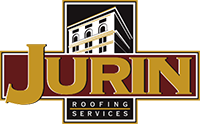How To Successfully Navigate Roofing Supply Inflation and Supply Chain Disruptions
Inflation and supply chain disruptions are transitory. At least that is what they would like us to believe. But if you have been involved in purchasing any type of construction products or services within the past couple of years, you will learn quickly that inflation has been anything but transitory.
According to Black’s Law Dictionary, transitory is defined as “passing from place to place; that may pass or be changed from one place to another; not confined to one place. According to this definition, the only aspect of our current inflation that is transitory is its ability to change from place to place. Or in other words, from manufacturer to vendor to contractor and ultimately to the building owner.

The St. Louis Fed operates the FRED (Federal Reserve Economic Data) database. According to the Producer Price Index for Construction Materials, the index has increased from 234.6 in February 2020 to 353.90 in May of 2022. This is an increase of 50.9%. The chart illustrates that this is the steepest increase in construction material costs ever recorded since the data was recorded starting in January of 1947.
So how does this impact a building owner?
- Increased Project Costs
Inflation has impacted all aspects of life. Everyone sees the cost increase at the gas pump as well as at the checkout counter at the local grocery store. And as a building owner, the cost of maintaining or improving a building has gone parabolic. In many cases, materials are not being priced until the day of delivery.
- Project Delays
Many products are severely backlogged. Increased costs of production have impacted the capacity of many manufacturing facilities. This trickles down to project sites where materials are needed. In some cases, material orders are delayed for months due to the inability to source raw materials.
So how should a building owner navigate this turbulent environment? It is not a matter of if someone will be impacted by these market conditions, but when. Here are a few tips that may help the savvy building owner through these difficult times.
1. Treat the Building Envelope as an Asset
An asset as defined by Investopedia is a resource with an economic value that an individual or corporation owns and controls with the expectation that it will provide future benefits. The building envelope is an asset. Without it, the building structure and the operations inside the building cannot be sustained. Assets need to be maintained to get the greatest return on the original investment.

2. Invest in Maintenance and Restoration
In a consumerist-based market, the products and services needed to replace something are assumed to be readily available. When something breaks, the replacement should be on the shelf and ready to go. But in today’s market, availability cannot be assumed. Maintain your existing assets and maximize the life cycle to help avoid knee-jerk replacements.
3. Plan Ahead
Eventually everything wears out or wears to the point where maintenance does not extend the life cycle of the asset. Except for rare occasions, the end of the asset life cycle can be accurately projected in advance. Working with a professional who can accurately project the REUL (remaining estimated use life) of a particular asset can assist a building owner in effectively planning for a major expenditure. The further in advance a building owner can plan, the more control the owner may have over pricing and availability of key materials.

4. Value Engineer Solutions
There is no single solution for all situations. As Thomas Sowell said, “There are no solutions. There are only trade-offs.” As an example, the primary goal of replacing a roof system is to provide a watertight seal for the building. The government as well as insurance companies may impose additional requirements such as wind uplift standards and fire ratings. There are multiple ways to achieve these requirements. Understanding options as well as pricing and material availability is an important aspect of delivering a solution on a timely basis within a budget that works for the building owner.
5. Leverage Technology
Technology is used to enhance the abilities of human beings. When someone looks at a roof system, they are not capable of seeing where moisture may have penetrated the roof system in all areas. Technology such as infrared cameras gives the operator the ability to see additional details and help narrow their focus to key critical areas. By using technology, small problems can be located before they become larger issues.

It appears that the United States is in the early stages of an economic recession. This coupled with unprecedented supply chain disruption and inflation make it vital that building owners look for solutions to maintaining their existing assets. These tips may help building owners in adopting an approach to their buildings that will extend the life cycle of key assets which will give additional runway for planning for building improvements.






